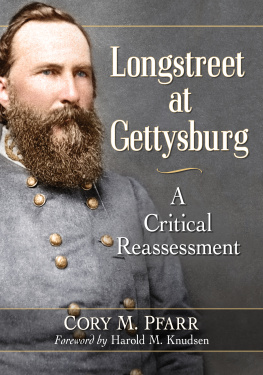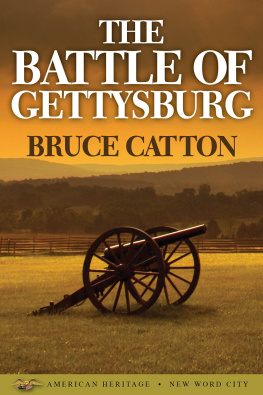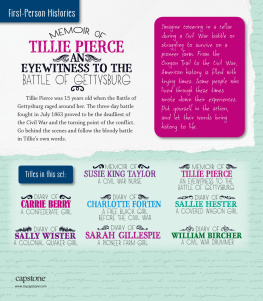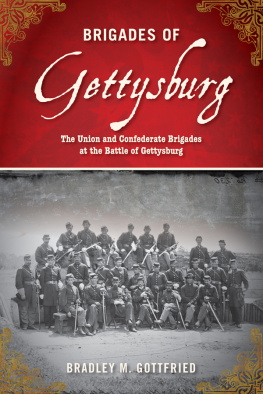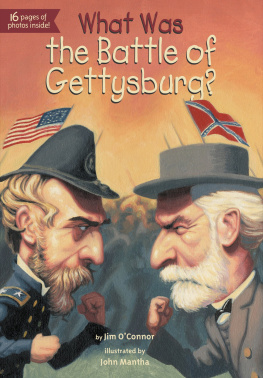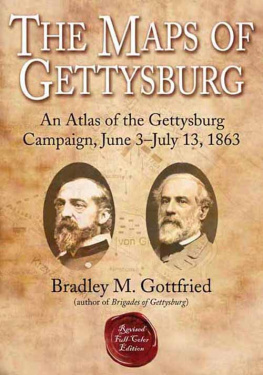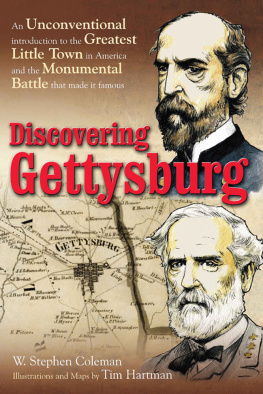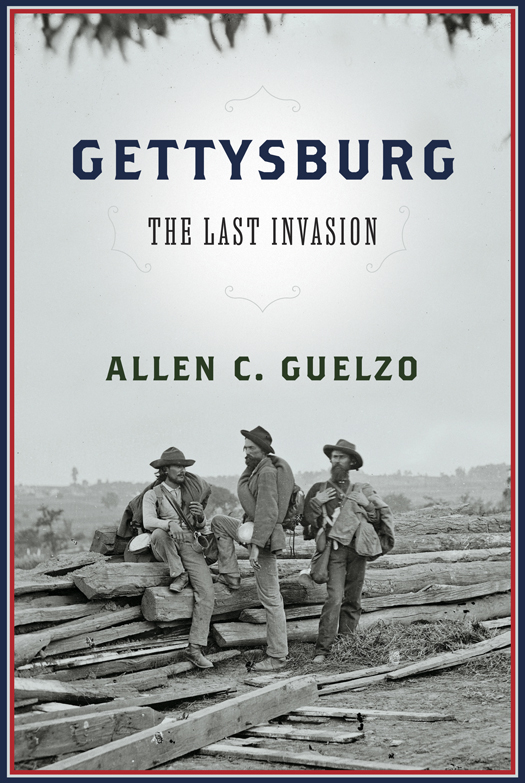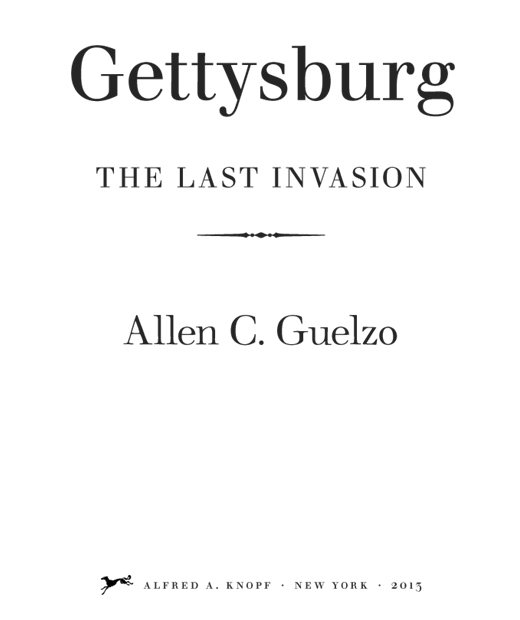ALSO BY ALLEN C. GUELZO
Fateful Lightning: A New History of the Civil War and Reconstruction
Lincoln Speeches (editor)
Lincoln: A Very Short Introduction
Abraham Lincoln as a Man of Ideas
The New England Theology: From Jonathan Edwards to Edwards Amasa Park (editor, with Douglas Sweeney)
Lincoln and Douglas: The Debates That Defined America
Lincolns Emancipation Proclamation: The End of Slavery in America
Abraham Lincoln: Redeemer President
Edwards in Our Time: Jonathan Edwards and the Shaping of American Religion (editor, with Sang Hyun Lee)
Josiah Gilbert Hollands Life of Abraham Lincoln (editor)
For the Union of Evangelical Christendom: The Irony of the Reformed Episcopalians, 18731930
Edwards on the Will: A Century of American Philosophical Debate, 17501850
THIS IS A BORZOI BOOK
PUBLISHED BY ALFRED A. KNOPF
Copyright 2013 by Allen C. Guelzo
All rights reserved. Published in the United States by Alfred A. Knopf, a division ofRandom House LLC, New York, and in Canada by Random House of Canada Limited, Toronto.
A Penguin Random House Company
www.aaknopf.com
Knopf, Borzoi Books, and the colophon are registered trademarks of Random HouseLLC.
eBook ISBN: 978-0-385-34964-2
Hardcover ISBN: 978-0-307-59408-2
Library of Congress Cataloging-in-Publication Data
Guelzo, AllenC.
Gettysburg : the last invasion / by Allen C. Guelzo.First edition.
pagescm
This is a Borzoi bookTitle page verso.
Includes bibliographicalreferences and index.
ISBN 978-0-307-59408-2
1. Gettysburg,Battle of, Gettysburg, Pa., 1863. I. Title.
E475.53.G8752013
973.7349dc23 2012047013
Cover image: Three Confederate prisoners, July 1863, Gettysburg, Pennsylvania, righthalf of an original glass stereograph.
Courtesy of the Library of Congress, Washington,D.C.
Cover design by Joe Montgomery
Maps by Robert Bull
v3.1_r6
To 2nd Lieutenant Jonathan E. Guelzo, U.S. Army,
in remembrance of all the days we have walked
the fields of Gettysburg together
Contents
Gettysburg
O Pride of the days in prime of the months
Now trebled in great renown,
When before the ark of our holy cause
Fell Dagon down
Dagon foredoomed, who, armed and targed,
Never his impious heart enlarged
Beyond that hour; God walled his power,
And there the last invader charged.
He charged, and in that charge condensed
His all of hate and all of fire;
He sought to blast us in his scorn,
And wither us in his ire.
Before him went the shriek of shells
Aerial screamings, taunts and yells;
Then the three waves in flashed advance
Surged, but were met, and back they set:
Pride was repelled by sterner pride,
And Right is a strong-hold yet.
Before our lines it seemed a beach
Which wild September gales have strown
With havoc on wreck, and dashed therewith
Pale crews unknown
Men, arms, and steeds. The evening sun
Died on the face of each lifeless one,
And died along the winding marge of fight
And searching-parties lone.
Sloped on the hill the mounds were green,
Our centre held that place of graves,
And some still hold it in their swoon,
And over these a glory waves.
The warrior-monument, crashed in fight,
Shall soar transfigured in loftier light,
A meaning ampler bear;
Soldier and priest with hymn and prayer
Have laid the stone, and every bone
Shall rest in honor there.
HERMAN MELVILLE
Acknowledgments
A CKNOWLEDGMENTS are supposed to be the altar of gratitude. However, I cannot help noticing how often they serve more or less the same purpose as the cocktail party to the social climber, as a place to issue noisy salutes to a checklist of celebrities with whom one is eager to be associated. I have no such parade of cultural mandarins to wave up onto my little stage, and probably not even much of a stage. But this makes me all the more uncommonly grateful to those from whom help has unstintingly come. I single out in particular my office staffers in Civil War Era Studies at Gettysburg College: Cathy Bain first, and then my faithful note-card transcribers, Lauren Roedner and Tim Koenig. I have benefited delightfully from discussions and exchanges of documents with John Rudy, Eric Wittenberg, Scott Mingus, and Charles Tarbox. Troy Harman, John Heiser, and Scott Hartwig of the Gettysburg National Military Park have been unflaggingly helpful. And for patience beyond the measure of Job, I must thank the happy few who read through each chapter for me as they appeared, and commented on them: Scott Bowden, Joe Bilby, Charles Teague, Gregory Urwin, and Ted Alexander. Zach Fry and Jason Frawley freely allowed me to use research material that is, as yet, unpublished by them. William A. Frassanito not only provided me with access to a number of the rare photographs in his collection, but also gave highly useful advice on the selection of images as a whole.
I want also to hail the cooperation of a number of libraries and collections in accessing manuscript collections, including the Houghton Library at Harvard University, the Alderman Library at the University of Virginia, the Southern Historical Collection at the University of North Carolina at Chapel Hill, the Library of Congress, the Museum of the Confederacy, the New-York Historical Society, the Virginia Historical Society, Special Collections in the Musselman Library at Gettysburg College, the Adams County Historical Society, the Western Reserve Historical Society, the library of the Gettysburg National Military Park, and Bowdoin College. Gettysburg College and Princeton University united in funding a yearlong sabbatical during the 201011 academic year, during which I served as the William Garwood Visiting Professor in the Department of Politics at Princeton. Bringing the manuscript out of its chrysalis state and into full wingspread has been the unceasing labor of my glorious agent, Michele Rubin of Writers House, and Andrew Miller, my editor at Random House. The Gettysburg Magazine published an early version of some of my thinking on the tactical context of the battle as Some Unturned Corners of the Battle of Gettysburg in its July 2011 issue.
Above all, I salute as gracefully and handsomely as I can the patience and good humor of my beloved wife, Debra, and our three now-grown children, Jerusha Mast, Alexandra Fanucci, and Jonathan Guelzo, all of whom have tolerated days, weeks, and months of an unresponsive and abstracted paterfamilias, his mind wandering somewhere over rocky hills and golden fields, toward a small knot of trees on a distant horizon.
This is a book about a nineteeth-century battle. That fact alone calls forward a number of caveats, beginning with the arrangement of hours and minutes in these chapters. America in the 1860s knew nothing about synchronized time. Clocks and watches were set by light and dark; there were no time zones, no standardized time-measurement schemes. Even meticulous timekeepers relied on the sound of church bells or public clocks for uniformity. Of course, in the middle of the battle, few people were noticing bells, if they were being rung at all, and few were likely to be listening for the cheerful chiming of a courthouse clock. Soldiers set their personal watches by their own estimates, and in battle, those lacking watches were reduced to little more than a hazardous guess about the time. This is a long way of saying that the times cited in this book are entirely the reckoning and responsibility of the author; but the vagaries of timekeeping in 1863 were so great that even I must protest having to share too much of the responsibility. The participants themselves tried to establish some rough sense of the timing of the battles events, and sometimes I have accepted their estimates or time notations, but always with the question in mind:



